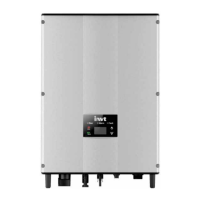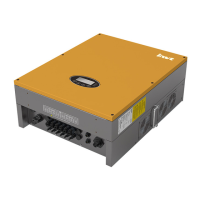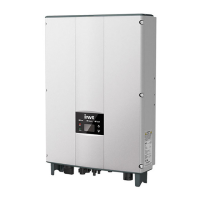Why is my INVT iMars BG8KTR showing AC overfrequency?
- JJohn JamesSep 10, 2025
An AC overfrequency error with your INVT Inverter is due to high frequency from the public grid.
Why is my INVT iMars BG8KTR showing AC overfrequency?
An AC overfrequency error with your INVT Inverter is due to high frequency from the public grid.
Why is my INVT Inverter showing AC overvoltage?
AC overvoltage in your INVT Inverter is due to high voltage from the public grid.
Why is my INVT iMars BG8KTR showing AC undervoltage?
AC undervoltage in your INVT Inverter is caused by low voltage from the public grid.
What causes input overvoltage in INVT iMars BG8KTR Inverter?
Input overvoltage in your INVT Inverter is due to DC input overvoltage.
What does output short-circuit mean on my INVT iMars BG8KTR?
Output short-circuit on your INVT Inverter means there is a short-circuit at the output.
What causes input overcurrent in my INVT iMars BG8KTR?
Input overcurrent in your INVT Inverter is due to DC input overcurrent.
What does manual shutdown mean on my INVT iMars BG8KTR Inverter?
A manual shutdown on your INVT Inverter means the device was stopped by the operation panel or upper PC.
Why is my INVT iMars BG8KTR Inverter showing AC underfrequency?
An AC underfrequency error on your INVT Inverter is due to low frequency from the public grid.
What does manual shutdown mean for INVT iMars BG8KTR?
Manual shutdown of your INVT Inverter means it was stopped by the operation panel or upper PC.
What does data consistency fault mean for INVT Inverter?
A data consistency fault in your INVT Inverter indicates inconsistent grid voltage, frequency, leakage current, or AC/DC injection.
Details safety instructions for receiving, unpacking, installing, and operating the inverter.
Specifies safety requirements for maintenance, inspection, and proper disposal of the inverter.
Details mechanical mounting steps, cable specifications, and electrical connection procedures.
Explains how to connect solar panel strings and the public grid to the inverter.
Details essential checks before operation and steps for achieving grid-connected running.
Provides a table of fault codes, messages, instructions, and fault analysis for quick troubleshooting.
Details safety instructions for receiving, unpacking, installing, and operating the inverter.
Specifies safety requirements for maintenance, inspection, and proper disposal of the inverter.
Details mechanical mounting steps, cable specifications, and electrical connection procedures.
Explains how to connect solar panel strings and the public grid to the inverter.
Details essential checks before operation and steps for achieving grid-connected running.
Provides a table of fault codes, messages, instructions, and fault analysis for quick troubleshooting.
| Model | iMars BG8KTR |
|---|---|
| Category | Inverter |
| Output Power | 8000 W |
| Output Frequency | 50/60Hz |
| Efficiency | 98.2% |
| Number of MPP Trackers | 2 |
| Cooling Method | Natural Convection |
| Protection Level | IP65 |
| Output Voltage | 230 V |
| Operating Temperature | -25°C to 60°C |
| Humidity | 0~100% |











